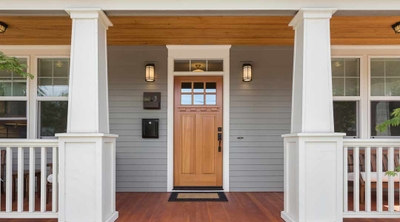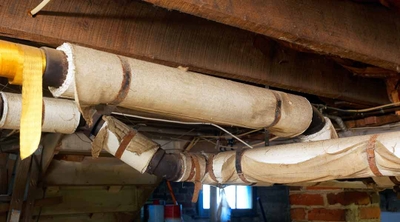What is a home foundation inspection?
3 min read
When it comes to home maintenance, many common issues tie back to the foundation beneath the surface. Either the foundation is causing problems, or problems are affecting the foundation. Because the foundation of a house is underground, many homeowners don’t think to get a foundation inspection. A structural engineer is the best person for a residential foundation inspection, but you can also conduct routine foundation inspections to identify potential issues.
Why should you inspect your home’s foundation?
Foundation damage can be costly to repair. Not only that, but it also compromises the comfort and safety of your home. Other issues like a leaky roof or a drafty window can be easy to spot. Meanwhile, the foundation is out of sight and often out of mind.
It’s not common for a house to collapse from foundation damage. However, the situation will likely worsen and lead to additional problems if left unfixed. Foundation settling, sinking, or shifting will usually happen slowly, giving you plenty of time to fix it if you know how to inspect a house foundation. Learn more about how home insurance covers foundation damage.
Where to look when inspecting your home’s foundation
A foundation inspection includes your home’s exterior and interior. You’ll look at the outside walls, ground, siding, and stairs. Inside, you’ll look again at the walls, windows, doors, and floors. The basement and attic are also part of a foundation inspection. Knowing how your home’s gutters work can also help you evaluate water drainage around your home and how it might be affecting your foundation.
A professional foundation inspection typically takes one to two hours. The inspection results can be a helpful guideline for completing a foundation inspection so that you’re being thorough but not spending more time than necessary.
What to look for during a home foundation inspection
“The first and probably the biggest issue is cracks in foundation walls,” says Niamh Ryle of HomeCheck. “If you can see cracks in your walls, there is a good chance that there is significant foundational damage lingering below. These usually manifest themselves as quite long, vertical cracks.”
Windows and doors
Ryle says windows and doors are often the next to show signs of foundation damage. If certain windows or doors don’t close smoothly and securely, it could signify foundational movement. Replacing them won’t solve the underlying problem that causes them to stick in the first place.
Floors
“Bulges, slopes, warping, or even cracks can be quite sinister,” Ryle says. “A sloping floor is almost always a sign of a serious foundational issue.”
A simple home foundation test is the ball test. Place a ball on the floor in any given room and see if or where it rolls. “When the foundation of a building begins to shift, it starts to slowly pull the walls and any support beams apart, leaving you with that unevenness across the structure and things like sagging floors,” Ryle explains.
Water damage
This is the wild card in any foundation inspection. If you notice moisture anywhere, it could stem from and contribute to foundation damage. Proper plumbing, HVAC, and gutter maintenance can help avoid and address water damage. Learn when home insurance covers water damage.
When to call a professional for a foundation inspection
Knowing how to complete a foundation inspection on your own will help you take better care of your home. If you see a cause for concern, don’t hesitate to get a professional foundation inspection from a licensed engineer and home repair expert. They will be the best to determine whether repairs are needed and how to perform them correctly. Serious problems with your foundation might require a major repair like home foundation piering.




